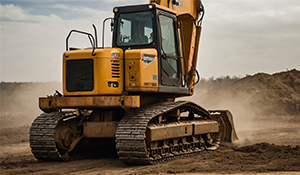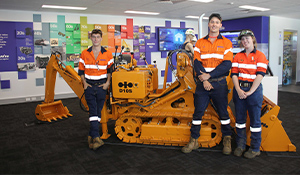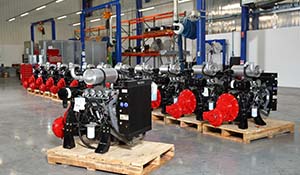How to Secure Financing for Heavy Equipment: A Comprehensive Guide
Understand Your Equipment Requirements and Financial Planning
Before you approach a lender, it’s essential to have a clear understanding of your equipment needs and how they align with your business’s financial strategy. Consider whether you’ll need short-term or long-term financing:
- Short-term financing is useful if you anticipate a quick return on investment, allowing you to pay off the loan faster and reduce interest.
- Long-term financing offers lower monthly payments spread out over time, but it can increase the overall cost of borrowing.
Australia offers various options for equipment financing, including hire purchase agreements, finance leases, and equipment loans. Each has different benefits, so be sure to evaluate which financing method will best support your business’s growth objectives. Consulting with a financial advisor may help you make the right decision.

Present a Strong Case for Your Business
Lenders want to know that they’re making a sound investment by approving your loan. To reassure them, you’ll need to present a clear, detailed business plan that outlines how the equipment will benefit your operations.
Your plan should include:
- How the equipment will improve productivity or efficiency.
- How it will impact revenue.
- The timeframe for repayment.
Additionally, be ready to discuss any potential risks and how you plan to mitigate them. Lenders prefer businesses that have considered worst-case scenarios and have a solid strategy to manage them, such as seasonal dips in revenue or fluctuating operational costs.
Evaluate Your Security Options for Heavy Equipment Financing
In Australia, lenders often require collateral to secure a loan. Heavy equipment itself is usually an acceptable form of collateral, particularly if it’s new or recently manufactured. However, you may need to offer additional security, depending on the loan size and type of equipment.
Other forms of collateral may include:
- Other business assets, such as property or machinery.
- Cash reserves or company shares.
Make sure to obtain accurate valuations for any assets you’re using as collateral. A well-presented and clearly valued portfolio of assets can help you negotiate better terms and improve your chances of securing favourable financing.
Research Australian Interest Rates and Loan Terms for Equipment
Interest rates for heavy equipment financing in Australia can vary widely based on the lender, your creditworthiness, and the type of equipment you’re purchasing. It’s essential to research and compare multiple loan offers to find the best terms.
Typical factors that influence loan terms include:
- Credit score: A higher credit score often results in better interest rates.
- Loan term length: Shorter loan periods generally have lower interest rates but come with higher monthly payments.
- Equipment type and age: New equipment often qualifies for more favourable rates compared to older or second-hand machinery.
Be thorough in comparing interest rates, and don’t hesitate to negotiate terms with lenders. This can save you thousands over the life of the loan.

Prepare Your Financial Documents in Advance
To streamline the application process, ensure that you have all the necessary financial documents ready to present. Lenders will want a clear picture of your business’s financial health and ability to repay the loan.
Key documents to prepare include:
- A breakdown of how much financing you require and how it will be used (e.g., to purchase specific equipment).
- Projected revenue and contracts that will support repayment.
- A detailed list of assets and liabilities, including existing loans and other commitments.
- Financial statements such as tax returns, profit and loss reports, and bank statements.
Providing well-organised financial information will give lenders confidence in your ability to handle loan repayments responsibly and can speed up the approval process.
Account for Extra Costs and Hidden Fees
When comparing loans, it’s crucial to look beyond the headline interest rate. Some lenders may include extra fees that can add to the overall cost of borrowing. These might include:
- Loan origination fees.
- Early repayment penalties.
- Account servicing fees.
Always ask for a detailed breakdown of the loan’s total cost, including any potential hidden fees. This will give you a complete understanding of what you’re committing to and help you make an informed decision.
Use Pre-Approval as a Bargaining Tool
Getting pre-approval for a loan can offer several advantages when negotiating the purchase of heavy equipment. Pre-approval signals to sellers that you’re serious and ready to move forward, which can sometimes give you leverage in price negotiations.
Pre-approval also helps streamline the final stages of your purchase, allowing you to act quickly when you find the right equipment.
Secure the Right Heavy Equipment Financing for Your Business
Navigating heavy equipment financing doesn’t have to be complicated. With the right preparation, a clear understanding of your financial needs, and thorough research into loan options like getting a quote at Just Heavy Equipment, you’ll be in a strong position to secure the equipment financing your business requires.













